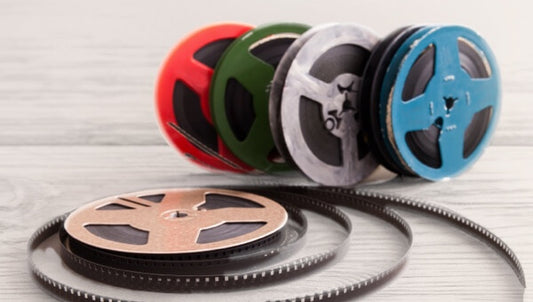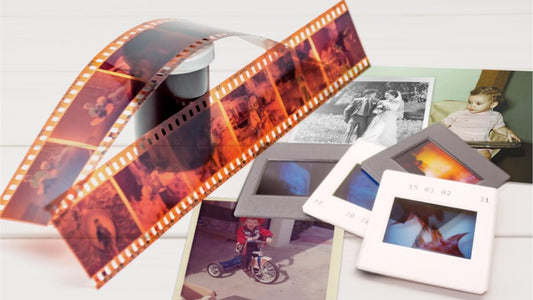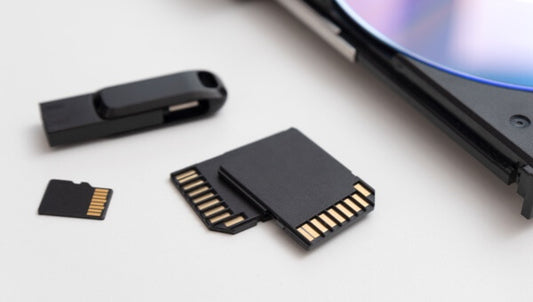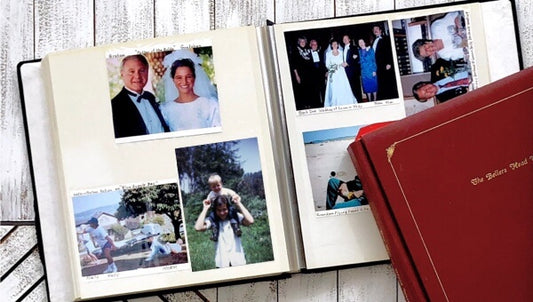It’s been a while since cassette tapes were at their peak of popularity, which means you might have some that are 20, 30, or even 40 years old. They’ve probably gathered dust and debris, which means you’ll need to clean them to hear the audio in the best condition and to avoid damaging your cassette player. That’s why our team at Capture put together this step-by-step guide on how to clean a cassette tape. That way you can ensure the songs, voices, and memories on your audio cassettes last forever, especially if you convert the cassettes to CD or digital download. We’ll also cover what to do if your tapes got wet, how to clean a cassette Walkman, and when it’s time to consider full restoration.
Jump To:
- Why Cleaning Cassette Tapes Is Important
- Preparing for Cleaning
- What Is the Best Way to Clean Cassette Tapes? 3 Proven Methods
- Best Practices for Cleaning Cassette Tapes
- Troubleshooting Common Issues
- How to Clean a Cassette Walkman
- Maintaining Clean Cassette Tapes
- Keep Your Tapes Clean and Your Memories Safe
Why Cleaning Cassette Tapes Is Important
Cassette tapes are sensitive to dust, grime, and debris, which can muffle audio, distort playback, or cause the tape to slip or jam. Even worse, that buildup can transfer to your cassette deck and lead to mechanical damage over time.
By cleaning your cassette tapes, you help:
- Preserve sound quality and avoid muffled or distorted audio
- Prevent tape reels from loosening, tangling, or tearing
- Protect your cassette player from internal residue buildup
- Extend the life of both the tape and the player
This is especially important if you're using some high-end iconic tape players that were popular during the early 80s or late 70 like an original Sony Walkman, which can be expensive to replace.

Cleaning importance doesn’t just go for audio cassettes, but the same reasons apply to VHS tape repair and maintenance. That’s because both analog formats use magnetized iron oxide tape to store audio or video signals and keeping them clean will ensure they retain the charge and play as originally intended.
Preparing for Cleaning
Before you start cleaning cassette tapes, it’s important to set up a clean, organized workspace. Having enough room to work reduces the risk of damaging your tapes and makes the process easier. Wipe down your surface to remove dust and debris, and make sure your hands are clean and dry. Once your space is ready, gather the materials needed for cleaning old cassettes.
Here’s what you’ll need for cassette tape cleaning methods 1 and 2:
- Isopropyl alcohol (90%) (Method 2 only)
- Q-tips or cotton balls
- Pencil or pen
- Room temperature water (Method 2 only)
- Microfiber cloth
What Is the Best Way to Clean Cassette Tapes? 3 Proven Methods
If you're wondering how to clean cassette tapes at home, these three methods can help - ranging from simple dry cleaning to a more thorough wet clean and even professional help. These techniques work for all standard audio cassette brands and types, including TDK, Philips, and BASF.
Method 1: Dry Cleaning (Quick Maintenance Clean)
While this is the fastest and easiest DIY cassette tape cleaning, it is also the least effective. That being said, we recommend using it often to keep your cassette tapes clean and in good condition.
Steps:
- Clean the exposed portion of the magnetic tape using a microfiber cloth and light circular motions. Do this before playing, rewinding, or fast-forwarding, especially if the tape hasn’t been used in a while. This section is the most exposed and likely to collect dust or grime, which can damage both the tape and your player if not removed first.
- Rewind (or fast-forward) the tape all the way to the beginning using a pencil or pen inside the tape hub. Make sure that you don’t overtighten at the end.
- Clean the exposed portion of the tape. Then, wind until new tape appears and clean that portion of the tape. This should be about 1.5 pencil rotations.
- Repeat step 3 all the way until the end of the tape path.
-
Rewind the tape all the way. Then, use a cotton swab or Q-tip to clean out the crevices on the outside of the case.
Use this method for tape cleaning regularly to prevent buildup, but if your tape looks dirty or hasn’t been played in years, move on to wet cleaning.
Method 2: Wet Cleaning (Best for Deep Cleaning at Home)
This method is more time-consuming but much more effective at removing grime, mold, and sticky residue. It involves alcohol and water, so it's important to follow safe cleaning techniques for cassette tapes to avoid causing damage. With the right approach, this method can restore sound quality and extend the life of older or heavily used tapes.
Steps:
-
Clean the exposed portion of the magnetic tape before playing or winding, especially if it hasn’t been used in a while. This section collects the most grime. Lightly wet a Q-tip or cotton ball with 90% isopropyl alcohol and clean using gentle circular motions. Let it dry completely, then wipe again with a microfiber cloth.
- Rewind the tape all the way to the beginning using a pencil or pen inside the tape hub. Make sure that you don’t overtighten at the end.
- Clean the exposed portion of the tape following the method in step 1. Then, wind until new tape appears and clean that portion of the tape following the same method again. This should be about 1.5 pencil rotations.
- Repeat step 3 all the way until the end of the tape path.
- Use microfiber clothes to clean the entire exterior of the tape. If there is dust and grime in the crevices, then you can also use a Q-tip to clean out those places.
- Unscrew the cassette case, especially if you notice grime inside of the tape.
- Use the cotton swab with rubbing alcohol to clean the rubber pinch rollers on the edges and the metal capstan, erase tape head, record tape head, and playback head.
- Reattach the case around the tape reels.
This method gives your cassette a full refresh, inside and out.

Method 3: Professional Cassette Tape Cleaning
The next method is to use a professional cleaning service. Since video restoration is similar, some places that recycle VHS tapes or offer VCR systems for sale may also clean audio cassettes.
You can also find people who are willing to clean audio cassettes on certain forums like:
In many cases, your best bet is to find a local shop or store that specializes in these types of analog media, but there are online options as well.
One example is AudioCassetteRepair.com, which offers full restoration services. These may include:
- Cleaning the tape path and internal components
- Replacing or repairing broken cases
- Adjusting tape tension
- Removing mold and debris
- Digitizing your tapes with features like noise reduction, track separation, and audio enhancement
While professional services do cost more and may take several days or weeks to complete, they offer the most thorough cleaning available - often including repairs, mold removal, and sound enhancement. For rare recordings or heavily damaged tapes, it’s often worth the investment, especially if you plan to convert your cassettes to CD or DVD.
Best Practices for Cleaning Cassette Tapes
When cleaning cassette tapes, following a few best practices can help protect both the tape and your cassette deck from damage. These tips ensure that your efforts improve sound quality rather than cause accidental wear or contamination.
Always clean before winding
As noted in Methods 1 and 2, start by gently wiping the exposed portion of the tape before you rewind or fast-forward. This prevents dirt from being dragged through the tape path or wound deeper into the reel.
Keep your hands (and space) clean
Wash your hands before handling tapes, or wear latex gloves for extra protection. Even trace oils or debris can degrade the tape over time. Be sure your workspace is clean, dry, and dust-free to avoid recontaminating the cassette.
Store tapes properly
Just as it’s always important to follow best practices for storing film, photos, and anything else valuable, make sure you store audio cassettes in a cool, dry place at all times. This helps prevent warping, mold, and signal degradation.
Wind slowly and carefully
If you're using a pencil or pen to wind your cassette, go slow. Fast or jerky winding can stretch, crinkle, or even tear the magnetic tape. Taking your time is key to preserving playback quality, especially if you're learning how to clean a compact cassette tape for the first time.
By combining proper cleaning methods with smart handling and storage, you’ll extend the life of your tapes and keep your audio sounding its best.

Troubleshooting Common Issues
Even with proper cleaning, cassette tapes can run into common issues like sticking, tangling, or casing damage. Here’s how to handle these problems safely.
Tape sticking to the pinch roller
If the oxide coating begins to shed or the tape becomes sticky due to humidity, it can stick to the pinch roller during playback. In this case:
- Clean the tape using Method 2 (wet cleaning)
- Use demagnetizer cleaning fluid on your cassette player’s heads
- Follow up with a tape head cleaner to remove residue from the rollers and capstans
This helps prevent further damage to your tape and your player.
Tangled or wrinkled tape
If your cassette tape gets tangled or wrinkled, you’ll need to carefully remove the damaged section:
- Cut out the wrinkled part using scissors
- Lay the remaining ends flat and align them as closely as possible
- Use a small piece of cellophane tape to splice the two sections together without overlapping
While this will shorten the recording slightly, it allows you to salvage the rest of the audio.
Cracked or warped cassette shell
If the plastic casing is damaged or warped, you can transfer the tape reels into a replacement cassette shell. Empty shells are available on Amazon and specialty audio retailers.
When doing this:
- Work on a clean, flat surface
- Handle the reels gently to avoid stretching or misaligning the tape
- Carefully align the spools and screws before closing the new shell
Replacing the shell is a great way to restore usability without losing your recording.
Water-Damaged Cassette Tapes
If your cassette tape has been exposed to water, whether from a spill, leak, or humidity, act quickly to prevent permanent damage:
- Gently blot the outside of the cassette with a microfiber cloth
- Open the shell (if possible) and let the tape air-dry for 24–48 hours in a clean, dry place
- Avoid using heat (like a hairdryer), which can warp the tape or casing
- Once fully dry, follow the wet cleaning method (Method 2) to remove any remaining residue
Never play a damp cassette. Doing so can ruin both the tape and your player. If the tape appears warped or shows signs of mold, professional restoration may be the safest option.
How to Clean a Cassette Walkman
Keeping your Walkman clean helps protect your tapes and ensures smooth playback. Every few months:
- Open the player and clean the heads, capstan, and pinch rollers with a cotton swab and isopropyl alcohol
- Remove dust from inside using a soft brush or compressed air
- Always store your Walkman in a cool, dry place when not in use
Regular maintenance helps prevent sticky residue from transferring onto your tapes and extends the life of your device.

Maintaining Clean Cassette Tapes
After you finish the process of how to clean a cassette tape, following proper maintenance is good for preventing damage while cleaning cassette tapes and after the cleaning is done.
- Store properly: Use a cool, dry, dark place; away from sunlight, humidity, and magnets. A shoebox or container helps reduce dust.
- Clean annually: Even a quick dry cleaning once a year can prevent buildup and preserve sound quality.
- Maintain your player: Clean the cassette tape heads and pinch rollers regularly to avoid damaging tapes during playback.
- Don’t delay digitizing: Audio cassette tapes and VHS tapes only last so long. Even with proper storage, most begin to degrade after 30 years. To preserve your recordings, it's best to transfer them to digital while they're still in good shape.
Keep Your Tapes Clean and Your Memories Safe
Now you know how to clean a cassette tape to ensure the best audio quality and prevent further damage. Make sure you clean them often and do so thoroughly to prevent excessive grime or damage. In addition, if possible, convert them into longer lasting or durable audio formats like CD or digital files.
While Capture doesn’t convert audio cassettes, we can digitize your home movies, 16mm, 8mm, and Super 8 film reels, and photos in digital format.











